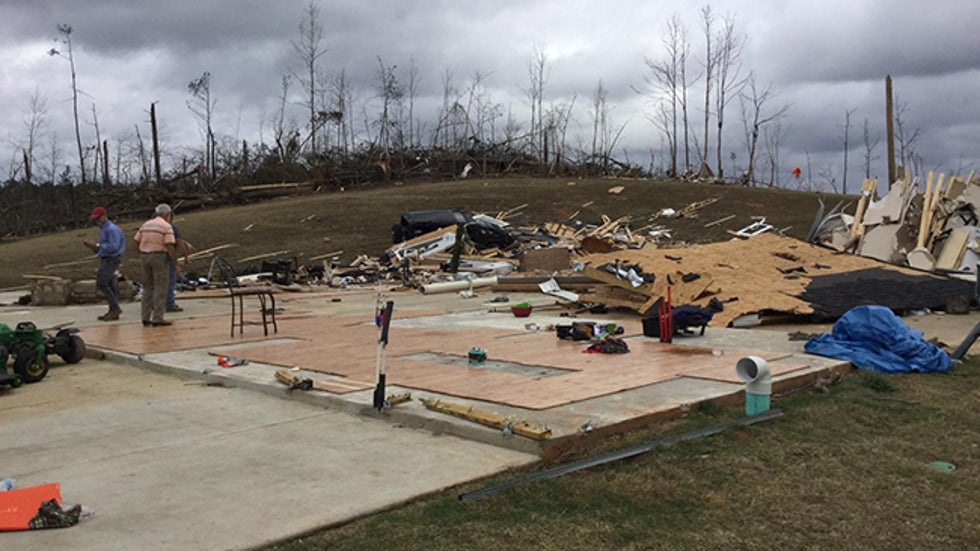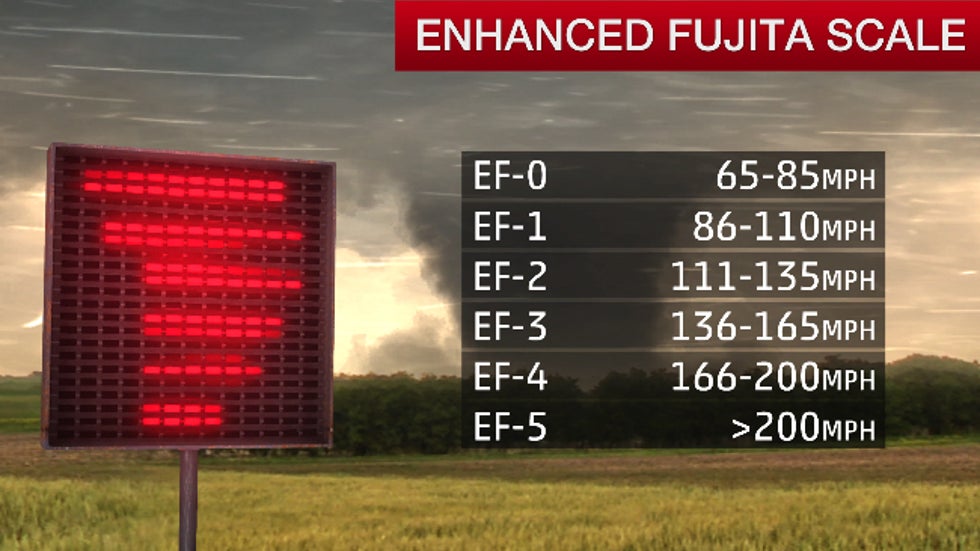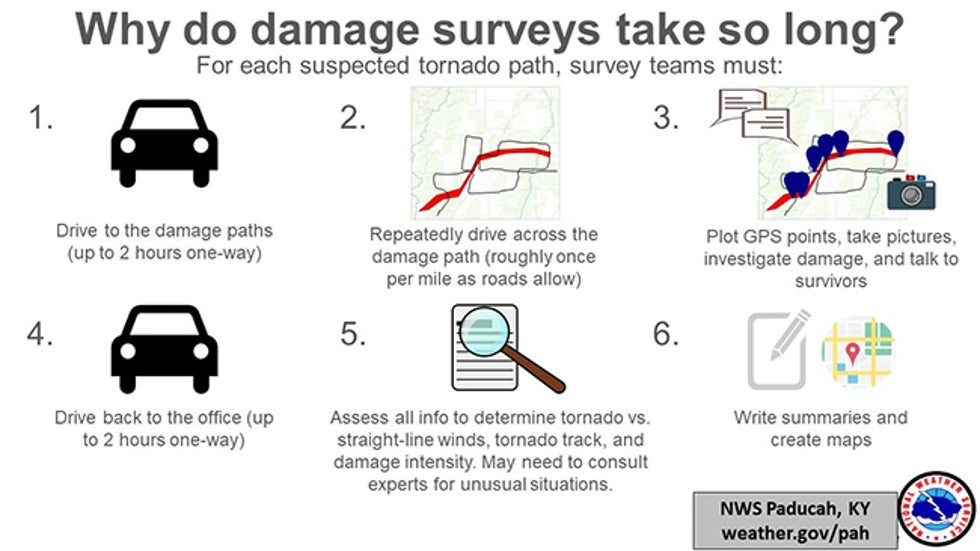Jonathan Erdman
National Weather Service damage surveys are much more than determining a tornado's strength and path. They are a vital task to enhance our understanding of nature's most violent storms.
When a tornado has occurred or is suspected, a team of meteorologists from the local National Weather Service office examines the damage.
The survey team is tasked with verifying whether the damage was caused a tornado or thunderstorm winds, when a tornado first touched down and lifted, how wide it was, and its intensity.
This sounds straightforward, but the process behind it can be complex and time consuming.
 A damage survey team investigates this home destroyed in a Dec. 23, 2015 tornado in northern Mississippi.
A damage survey team investigates this home destroyed in a Dec. 23, 2015 tornado in northern Mississippi.Because it's exceedingly rare to measure a tornado's wind speed at the ground while it's in progress, wind speeds are estimated through damage inspections.
Theodore "Ted" Fujita was a pioneer in tornado research and post-storm damage surveys, beginning in the 1950s. Based on this work, Fujita and meteorologist Allen Pearson created the initial Fujita-Pearson scale in 1971.
The scale was updated in 2007 to the Enhanced Fujita scale to take into account the quality of building construction and to take into account what had been damaged, from trees to small barns to large shopping centers.
A tornado is rated based on the most severe damage found along its path, from EF0 (the lowest) to EF5 (the most intense).
For example, an EF3 tornado with a 30-mile long path may have produced EF3 damage to only one house or building, but EF0 1 or 2 damage along the rest of its path.

This requires the survey team to find the worst damage, sometimes among dozens, if not hundreds, of damaged buildings for miles.
In higher-end damage cases, EF3 or stronger, other experts like engineers are consulted to help assess the damage.
Rating the tornado's intensity is only one challenge in a damage survey.
The damage path may be hours away from the nearest NWS office. It may also require the team to crisscross the damage path multiple times to help establish the tornado's start and end points.
Drones have been one advancement in helping assessment teams in determining a damage path. Below is an example by the NWS-Louisville, Kentucky, office from the Dec. 10-11, 2021 outbreak.
Rick Smith, warning coordination meteorologist at NWS-Norman, Oklahoma, shared other damage survey challenges in a Twitter thread.
 Some factors to keep in mind regarding NWS damage surveys.
Some factors to keep in mind regarding NWS damage surveys.Among these included the wait to access some areas and weather delays.
Smith told weather.com he has had to dodge tornado warnings while surveying damage in the past.
One important part of a storm survey is talking with those affected.
"It's a sobering thing," NWS-Omaha warning coordination meteorologist Brian Smith said in a 2016 NOAA article. "A lot of times when you tell them who you are, they open up and start talking...and that's part of the grieving process. You feel more welcome when they do that."
Sometimes multiple tornadoes tear through a NWS forecast area. Some of these may be long-track supercells that spawned tornadoes over dozens of miles.
These require multiple damage survey teams, and it can take days to survey the damage of every tornado, as was the case in the Dec. 10-11, 2021 outbreak.
Final tornado counts for larger outbreaks over multiple states can take over a week to be determined.
Some NWS meteorologists work long shifts. They could issue warnings during an outbreak well into the night and then have to survey damage the next morning.
Why are the surveys important?
First of all, they help educate the public. Seeing what a tornado's winds are capable of may, and should, prompt you to take cover immediately when a warning is issued.
Secondly, they help forecasters and researchers by adding to the historical database of where, when and how strong tornadoes occurred.
This can lead to improvements in the detection of tornadoes and the forecasting of the conditions most conducive for tornadoes by computer models.
The Weather Company’s primary journalistic mission is to report on breaking weather news, the environment and the importance of science to our lives. This story does not necessarily represent the position of our parent company, IBM.
The Weather Company’s primary journalistic mission is to report on breaking weather news, the environment and the importance of science to our lives. This story does not necessarily represent the position of our parent company, IBM.

No comments:
Post a Comment